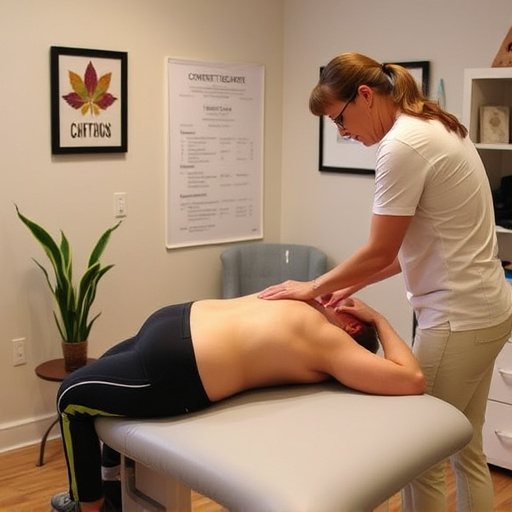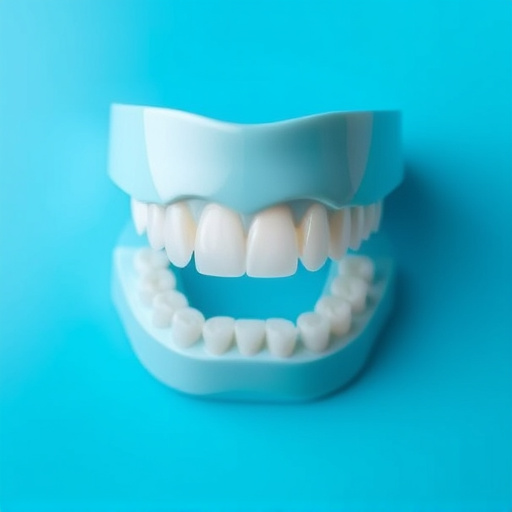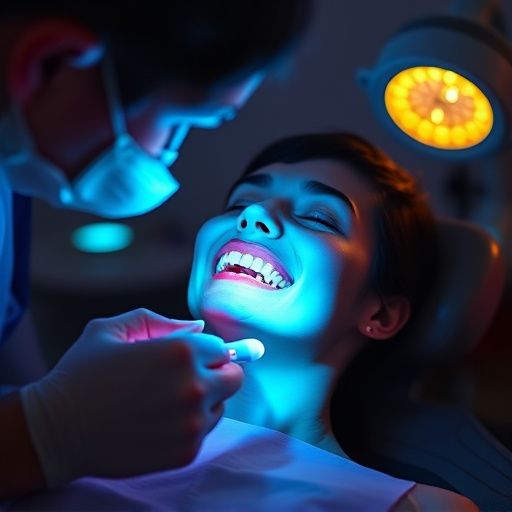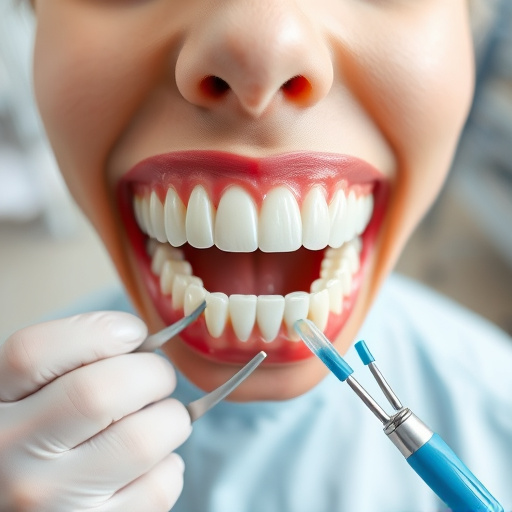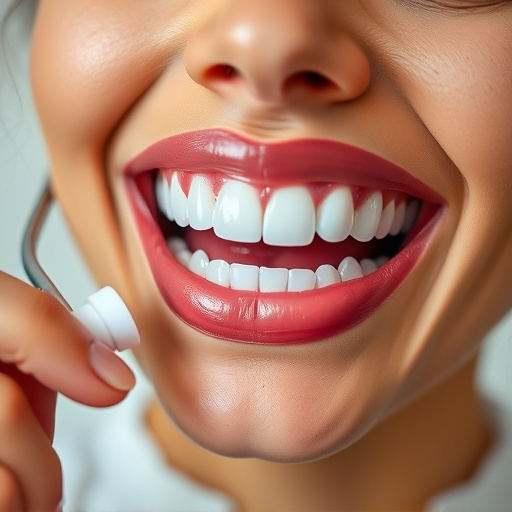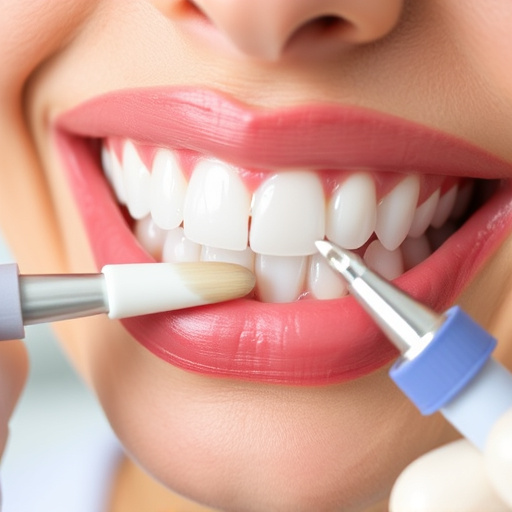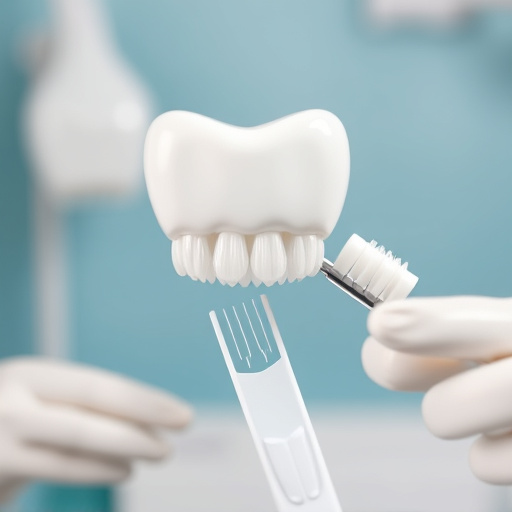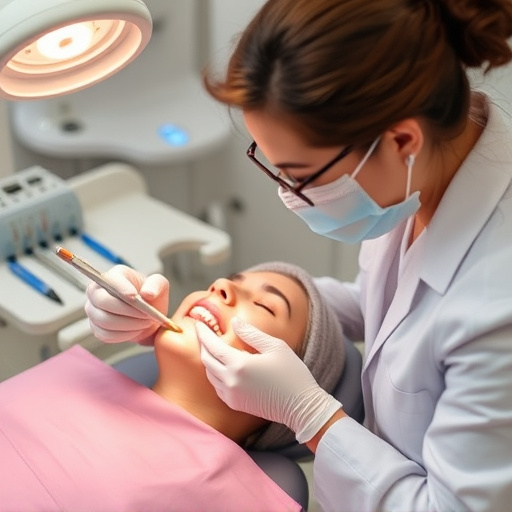Nitrous oxide sedation, or "laughing gas," is a safe and effective method to calm patients during dental procedures. Patients inhale a mix of nitrous oxide and oxygen through a mask, experiencing relaxation, lightheadedness, or laughter, reducing anxiety and discomfort. This technique is ideal for treatments like dental fillings or clear aligners. Unlike other sedatives, the effects wear off quickly once the procedure ends, allowing patients to resume normal activities without lingering side effects. However, it requires strict safety protocols, including proper ventilation, trained professionals monitoring vitals, and eligibility guidelines for specific patient conditions.
Discover the transformative power of nitrous oxide sedation for stress-free dental visits. This innovative approach combines the calming effects of nitrous oxide with improved patient comfort and cooperation, making routine procedures less daunting.
Learn how it works, explore its numerous benefits in reducing dental anxiety, and understand the safety considerations for implementing this game-changing technique in your dental practice.
- Understanding Nitrous Oxide Sedation: How It Works and Its Benefits
- The Role of Nitrous Oxide in Reducing Dental Anxiety
- Implementation and Safety Considerations for Nitrous Oxide Sedation in Dental Practices
Understanding Nitrous Oxide Sedation: How It Works and Its Benefits
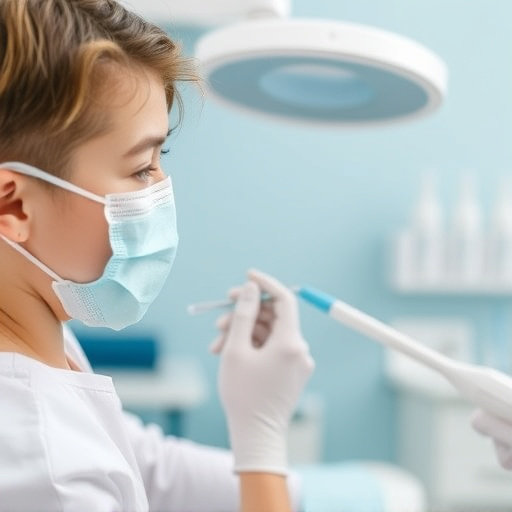
Nitrous oxide sedation, also known as “laughing gas,” is a safe and effective method to calm patients during dental procedures. This gentle form of sedation involves inhaling a mix of nitrous oxide and oxygen through a mask. As the patient breathes in, they experience a feeling of relaxation and can even feel lightheaded or slightly giggly—hence the common nickname. But it’s not just for entertainment; nitrous oxide has real benefits in dental care.
One of its key advantages is that it allows patients to remain conscious during procedures, which is ideal for those who may be anxious about general dentistry or need treatments like dental fillings or clear aligners. The sedation helps reduce anxiety and discomfort, making the experience more pleasant. Additionally, nitrous oxide wears off quickly once the procedure is over, allowing patients to return to their normal activities shortly thereafter without lingering side effects often associated with other types of sedation.
The Role of Nitrous Oxide in Reducing Dental Anxiety
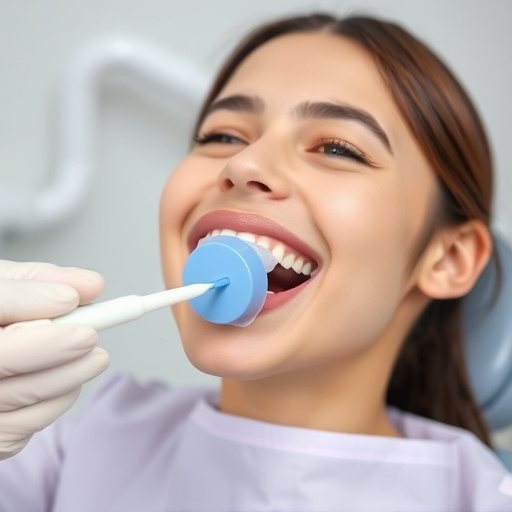
Nitrous oxide sedation has emerged as a game-changer in dentistry, offering an effective solution to combat dental anxiety and create a more comfortable experience for patients. This gentle sedative gas, often referred to simply as “laughing gas,” provides a deep sense of relaxation, making it easier for individuals who experience fear or stress during dental procedures. By inhaling nitrous oxide, patients can feel calmer and more at ease, reducing the usual anxiety associated with tasks like getting dental crowns, wisdom tooth removal, or even routine dental cleanings.
The mechanism behind its effectiveness lies in how nitrous oxide interacts with the brain’s chemical receptors. It blocks certain neurotransmitters responsible for pain and stress signals, replacing them with feelings of euphoria and deep relaxation. This allows patients to remain awake and responsive during procedures while significantly lowering their perceived level of discomfort. As a result, nitrous oxide sedation can make dental visits more manageable and less daunting, encouraging individuals to prioritize their oral health without the usual barriers of anxiety.
Implementation and Safety Considerations for Nitrous Oxide Sedation in Dental Practices
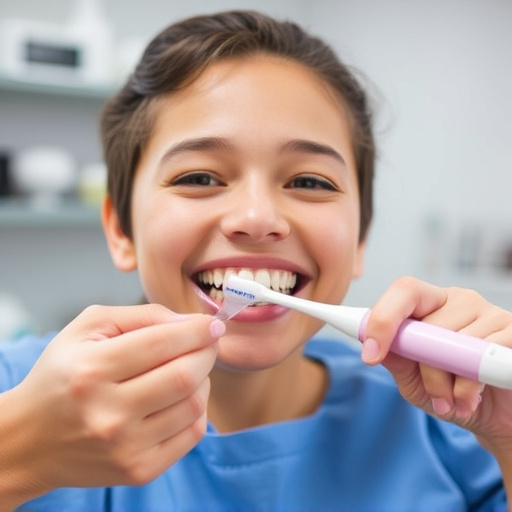
Nitrous oxide sedation is an effective method to ensure stress-free dental visits for patients. Its implementation in dental practices involves careful consideration of safety protocols. The process begins with ensuring proper ventilation to maintain a safe and controlled environment, as nitrous oxide is inhaled. Dental professionals must be adequately trained in its administration, monitoring patient vitals, and recognizing any potential adverse reactions.
Safety measures include setting clear guidelines for eligible patients, especially those with specific medical conditions or taking certain medications. Proper fit of the nasal hood is crucial to optimize gas delivery and prevent leakage. During treatment, dentists should observe patients closely, ensuring they remain comfortable and responsive. Regular training and updates on safety protocols are essential to maintain a high standard of care in nitrous oxide sedation for both restorative dentistry and routine oral exams.
Nitrous oxide sedation, also known as laughing gas, offers a safe and effective way to reduce dental anxiety and make visits more comfortable. By understanding its mechanisms, benefits, and implementation guidelines, dental professionals can provide a stress-free experience for patients. This innovative approach enhances patient care, particularly for those who experience fear or discomfort during dental procedures. With proper training and adherence to safety measures, nitrous oxide sedation has the potential to revolutionize dental practices, making routine check-ups and complex treatments alike more enjoyable and less stressful.



